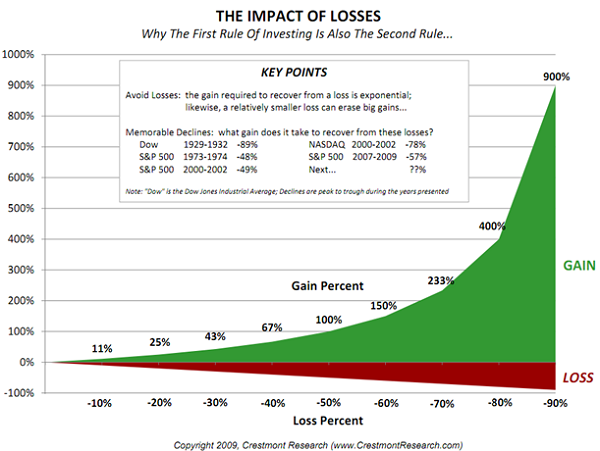The odds are stacked against you.
Even though you're probably intelligently invested in a variety of sound commodity opportunities, it's likely that one or more of them will lose a substantial portion of their worth in the next year or so.
And even though I'm as certain as ever that we will see huge gains in commodity investments over the foreseeable future, I'm more certain that we need to exercise caution.
So what can you do?
It's easy to plan for success. If all of our investments double next month, we won't have many difficulties coming up with what to do with our winnings.
It's much harder to come up with a plan for failure – but it's completely necessary.
Because the game in investing has nothing to do with whether you're a commodity bull or a stock bear or an Austrian or a Keynesian.
It has everything to do with having a concrete plan for your losing investments.
And I know most readers already closed this article, because no one wants to read about losing investments.
But if you're not prepared for your losers, you're going to have a hard time being a successful investor.
So what's your plan?
It's a good idea to have a basic mental trailing stop loss on all of your investments.
I like 30% as a stop loss. It's a big enough swing that you probably won't get knocked out of an investment on an unexpected dip – and it's small enough that you can come back from it.
What do I mean by "come back from it?"
Well, take a look at this chart – which shows the exponential quality of growing losses:

With a 30% loss, you need a 43% gain to get back to even. We can handle that hurdle. But if you let the loss get to 40%, you need a 67% gain.
For me, once the losses exceed 30% it just doesn't make mathematical sense to hold on to a loser.
Your risk tolerance may differ – but you should consult the chart above to see what gain you'll need to come back from the pain-point you pick.
For the record, I don't recommend entering your stop into the market. I prefer mental stop-losses that only kick in after a day's trading is closed. In other words, don't let an intra-day low trigger your stop loss. Simply look at close prices to see if the security has dropped below your mental stop loss.
This type of risk management is only one part of the equation.
The other part of the equation is somewhat more complicated: position sizing.
I'm working on a report on how to make a mathematical, rational decision about how much to allocate into any given security or investment. I'll make this report available to Resource Prospector Pro subscribers before the end of the month.
If you're interested, you can click here to read more about Resource Prospector Pro.
Good Investing,
Kevin McElroy
Editor
Resource Prospector Pro
 Facebook
Facebook
 Twitter
Twitter